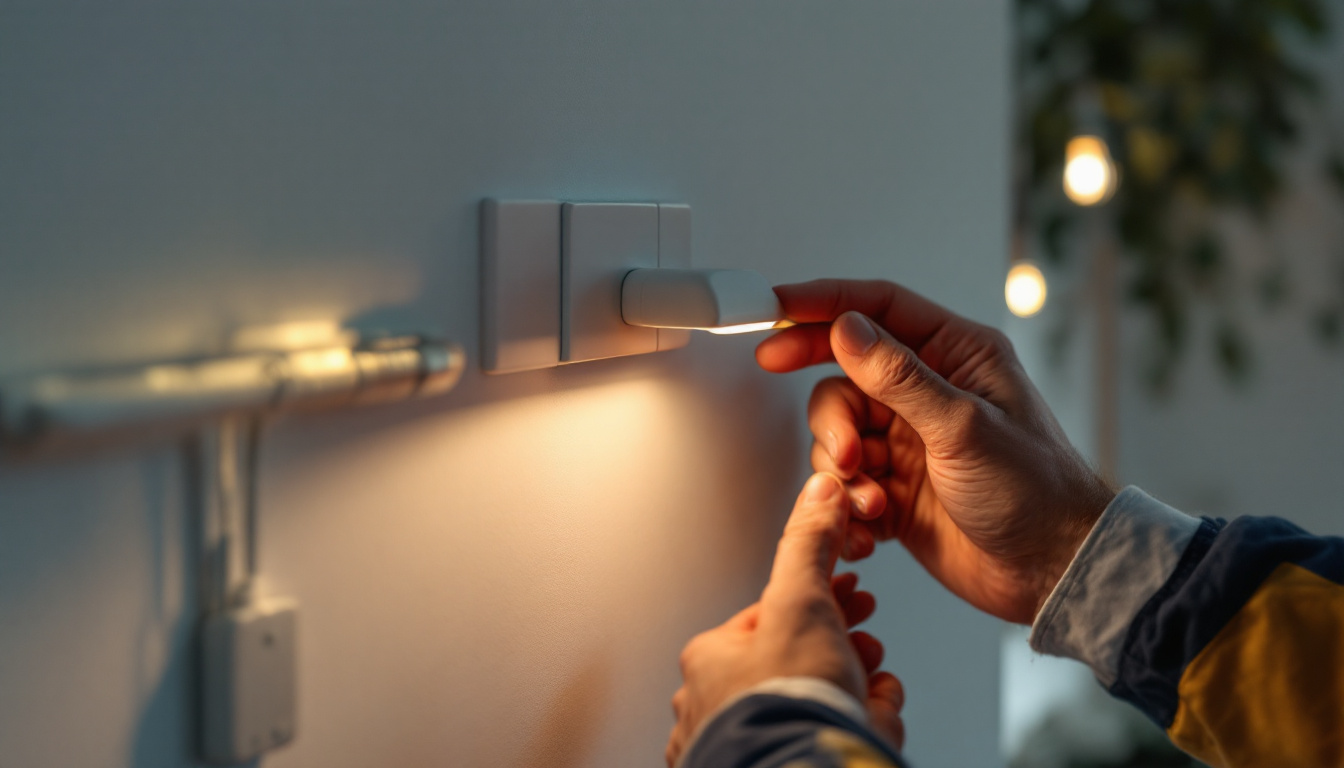

In the world of lighting, flickering bulbs can be more than just an annoyance; they can signal deeper issues related to electrical compliance, safety, and performance. For lighting contractors, understanding the causes and implications of bulb flickering is essential for ensuring customer satisfaction and adhering to industry standards. This article delves into the nuances of bulb flickering, compliance regulations, and what lighting contractors need to know to navigate these challenges effectively.
Bulb flickering can occur for a variety of reasons, ranging from minor electrical issues to significant safety hazards. It is crucial for lighting contractors to identify the root causes of flickering to address them appropriately. By doing so, they can not only enhance the performance of lighting systems but also ensure compliance with relevant regulations.
Several factors can contribute to bulb flickering. One of the most common culprits is a loose connection within the light fixture or the electrical circuit. When connections are not secure, it can lead to intermittent power supply, causing the bulb to flicker. Additionally, using incompatible dimmer switches with LED bulbs can result in flickering, as not all dimmers are designed to handle the lower wattage of LEDs.
Another frequent cause is voltage fluctuations in the electrical system. These fluctuations can occur due to various reasons, including heavy appliances cycling on and off or issues with the electrical grid itself. Understanding these causes is essential for contractors, as they can provide insights into potential solutions for their clients.
Flickering bulbs can significantly impact the overall performance of a lighting system. Beyond the immediate annoyance to occupants, flickering can lead to reduced lifespan for bulbs, increased energy consumption, and even potential damage to electrical components. For contractors, addressing flickering promptly can save clients money in the long run and enhance the reliability of their lighting solutions.
Moreover, the psychological effects of flickering lights should not be overlooked. Prolonged exposure to flickering light can lead to eye strain, headaches, and even increased stress levels among occupants. This is particularly important in environments such as offices, schools, or healthcare facilities, where optimal lighting is essential for productivity and well-being. Contractors should consider these factors when designing lighting solutions, ensuring that they not only meet technical specifications but also promote a comfortable and healthy atmosphere.
Additionally, the advent of smart lighting technology has introduced new dimensions to the issue of bulb flickering. Smart bulbs, which can be controlled remotely and often include dimming features, may experience flickering if not properly integrated with the home’s existing electrical systems. Understanding the compatibility of smart devices with traditional wiring is vital for contractors, as it can help prevent flickering and ensure a seamless user experience. By staying informed about the latest advancements in lighting technology, contractors can offer clients innovative solutions that enhance both functionality and aesthetics.
Compliance with local and national regulations is a critical aspect of any lighting project. Understanding these regulations helps contractors avoid legal issues and ensures that installations meet safety and performance standards. Adhering to these regulations not only protects the contractor but also safeguards the end-users, ensuring that the lighting systems are reliable and effective in their intended environments.
The National Electrical Code (NEC) sets forth guidelines for electrical installations, including lighting systems. Compliance with the NEC is mandatory in many jurisdictions, and it covers various aspects of electrical safety, including wiring methods, grounding, and circuit protection. Contractors must familiarize themselves with the NEC to ensure that their installations do not just function properly but also meet safety requirements. This knowledge is essential, as non-compliance can lead to costly fines and potential liability in the event of an accident.
For instance, the NEC outlines requirements for circuit load calculations, which can help prevent issues related to flickering caused by overloaded circuits. By adhering to these guidelines, contractors can ensure that their lighting systems are both compliant and efficient. Additionally, the NEC is periodically updated to reflect advancements in technology and safety practices, making it imperative for contractors to stay current with these changes. This ongoing education can also provide opportunities for contractors to innovate and incorporate the latest technologies into their projects, enhancing both safety and performance.
In addition to safety regulations, energy efficiency standards play a crucial role in lighting compliance. Many regions have adopted energy codes that dictate the types of lighting products that can be used in commercial and residential applications. These standards often encourage the use of energy-efficient lighting solutions, such as LED technology, which can help mitigate flickering issues. The shift towards energy-efficient lighting not only reduces energy consumption but also lowers operational costs for businesses and homeowners alike.
Contractors should stay informed about the latest energy efficiency regulations, as they can impact product selection and installation practices. By promoting compliant and energy-efficient solutions, contractors can enhance their reputation and provide added value to their clients. Moreover, understanding these standards can open doors to various incentives and rebates offered by local governments and utility companies, further encouraging the adoption of sustainable practices. This proactive approach not only benefits the environment but also positions contractors as leaders in the industry, capable of delivering cutting-edge solutions that meet both regulatory requirements and client expectations.
To effectively address bulb flickering, lighting contractors should adopt a systematic approach that includes troubleshooting, product selection, and client education. Implementing best practices can lead to improved customer satisfaction and long-term success in the industry.
When faced with flickering bulbs, contractors should begin with a thorough troubleshooting process. This involves checking all connections, including those at the fixture, junction boxes, and circuit breakers. Ensuring that all connections are tight and secure can often resolve flickering issues.
Next, contractors should assess the compatibility of dimmer switches with the installed bulbs. If the dimmer is not rated for LED use, replacing it with a compatible model can eliminate flickering. Additionally, measuring voltage levels can help identify any fluctuations that may be contributing to the problem.
Another critical step in troubleshooting is to inspect the wiring for any signs of damage or wear. Over time, wires can become frayed or corroded, leading to inconsistent electrical flow. Contractors should also evaluate the overall load on the circuit; if too many devices are drawing power from the same circuit, it can result in flickering. By methodically addressing these potential issues, contractors can ensure a more stable lighting environment.
Selecting the right products is crucial for preventing flickering. Contractors should prioritize high-quality bulbs and fixtures that are designed to minimize flickering. When using dimmable LEDs, it is essential to pair them with compatible dimmers that are specifically designed for LED technology.
Furthermore, contractors should consider the wattage and voltage ratings of the bulbs and fixtures to ensure they match the circuit specifications. By choosing compliant and high-performance products, contractors can reduce the likelihood of flickering and enhance the overall lighting experience for their clients.
In addition to compatibility, the color temperature of the bulbs can also play a role in perceived flickering. Warmer color temperatures tend to create a more inviting atmosphere, while cooler tones can sometimes exacerbate the flickering effect. Contractors should educate themselves on the nuances of color temperature and recommend options that align with the client’s preferences and the intended ambiance of the space.
Client education is a vital component of addressing bulb flickering. Contractors should take the time to explain the potential causes of flickering and the importance of proper installation and maintenance. By informing clients about the benefits of energy-efficient lighting solutions and the implications of compliance, contractors can foster trust and confidence in their expertise.
Additionally, providing clients with guidance on how to identify and report flickering issues can empower them to take proactive steps in maintaining their lighting systems. This collaborative approach can lead to more satisfied customers and repeat business.
Moreover, contractors can enhance client education by offering maintenance tips, such as the importance of regularly checking fixtures and replacing bulbs as needed. Workshops or informational sessions can also be beneficial, allowing clients to ask questions and gain a deeper understanding of their lighting systems. By investing time in education, contractors not only improve client relationships but also position themselves as knowledgeable professionals in the field.
The lighting industry is continually evolving, with new technologies and regulations emerging regularly. Staying ahead of these trends is essential for lighting contractors to remain competitive and compliant.
LED technology has revolutionized the lighting industry, offering energy-efficient solutions with longer lifespans. As LED technology continues to advance, contractors must stay informed about the latest developments, including improvements in dimming capabilities and color rendering. These advancements can help mitigate flickering issues and enhance the overall quality of lighting installations.
Moreover, as more clients seek sustainable and energy-efficient solutions, contractors who are knowledgeable about the latest LED innovations will be better positioned to meet customer demands and comply with evolving energy efficiency standards.
The rise of smart lighting systems presents both opportunities and challenges for lighting contractors. These systems often incorporate advanced controls and automation, which can enhance user experience and energy efficiency. However, they also require a deeper understanding of technology and compliance with new regulations related to data privacy and cybersecurity.
Contractors should consider investing in training and resources to stay updated on smart lighting technologies and their implications for compliance. By doing so, they can offer clients cutting-edge solutions while ensuring that installations meet all necessary standards.
Bulb flickering is a multifaceted issue that lighting contractors must address to ensure compliance and customer satisfaction. By understanding the causes of flickering, adhering to relevant regulations, and implementing best practices, contractors can enhance the performance of their lighting systems and build strong relationships with clients.
As the industry continues to evolve, staying informed about advancements in technology and compliance requirements will be crucial for contractors. By embracing these changes and prioritizing quality and safety, lighting contractors can thrive in a competitive market while providing exceptional service to their clients.
Ready to tackle bulb flickering with the best lighting solutions on the market? At LumenWholesale, we provide lighting contractors with the highest quality, spec-grade lighting products at prices that can’t be beaten. Say goodbye to the middleman and hello to superior lighting products that meet the strictest industry standards. Plus, with free shipping on bulk orders, you can stock up on reliable, high-performance lighting for every project with ease. Don’t compromise on quality or value—choose LumenWholesale for a seamless blend of excellence and affordability. Wholesale Lighting at the Best Value is just a click away.

Discover the essentials of high bay occupancy sensors and their impact on modern lighting solutions.

Discover why purchasing architectural square linear lights in bulk from local distributors might not be the best choice.

Discover why lighting contractors should prioritize the choice of electrical switches in their projects.

Discover how suspended ceiling lights can transform your space with innovative lighting designs.
Get notified when NEW deals are released.
Optimize your budget with wholesale discounts.
Only top-quality, specification-grade lighting products.
No additional costs at checkout - what you see is what you pay.
We understand the unique needs of contractors.